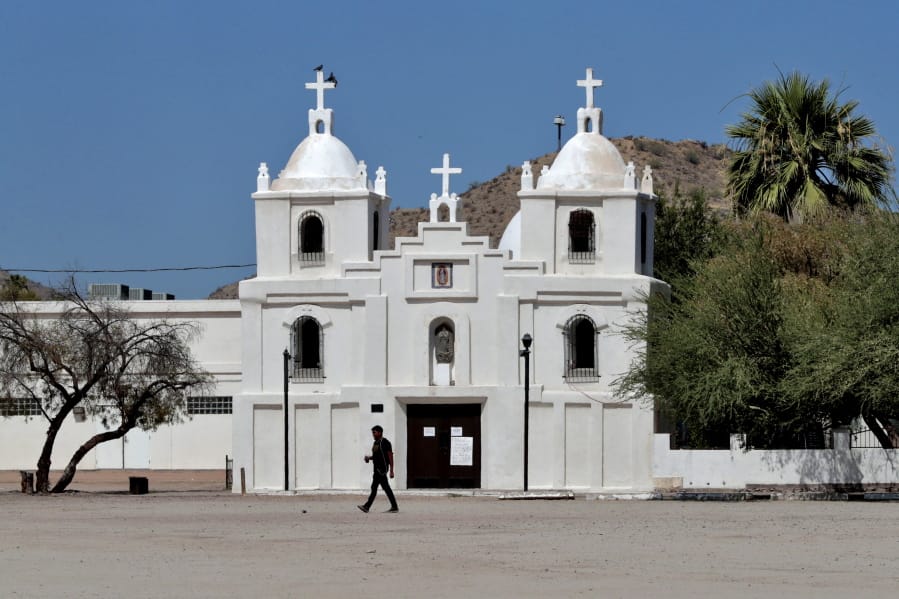GUADALUPE, Ariz. — A Hispanic immigrant working at a fast-food restaurant in North Carolina is rushed to the hospital after she contracts COVID-19. A sickened Honduran woman in Baltimore with no health insurance or immigration status avoids the doctor for two weeks and finally takes a cab to the hospital and ends up on oxygen.
As the coronavirus spreads deeper across America, it’s ravaging Latino communities from the suburbs of the nation’s capital to the farm fields of Florida to the sprawling suburbs of Phoenix and countless areas in between.
The virus has amplified inequalities many Latinos endure, including jobs that expose them to others, tight living conditions, lack of health insurance, mistrust of the medical system and a greater incidence of preexisting health conditions like diabetes. And many Latinos don’t have the luxury of sheltering at home.
“People simply cannot afford to stop working,” said Mauricio Calvo, executive director of the Latino Memphis advocacy group in Tennessee.
In many areas, Latinos comprise a dramatically higher percentage of the positive COVID-19 tests compared with other racial and ethnic groups.
About 65 percent of positive tests in the county that is home to Chattanooga, Tenn., are Latinos, even though they make up just 6 percent of the population. With many infected families living in the same home with no other place to go, Chattanooga officials are looking at providing alternative sites at hotels or other locations where people can safely isolate.
The same disparities exist nationwide.
Latinos account for 45 percent of coronavirus cases in North Carolina, where they make up only 10 percent of the population, according to the state’s Department of Health and Human Services. In the Latino and Native American town of Guadalupe, Ariz., residents are testing positive at more than four times the rate of the entire county. The ZIP code with the most COVID-19 cases in Maryland borders the nation’s capital and is majority Hispanic.
Honduran native Arely Martinez, who now lives in Baltimore, delayed medical help for two weeks after getting a fever and headache, struggling to breathe and losing her sense of smell. Lack of insurance, her immigration status and misinformation about the pandemic kept her home, but she finally went to the hospital and tested positive for COVID-19.
“I had no medical guidance, and apart from that, I was afraid because of the comments from people that when you go to the hospital, they would end up killing you,” said Martinez, who spent two days in the hospital fretting about her three children while her husband left them alone to seek work.
Her husband tested negative for the virus, but her sister, who was fetching their groceries, became ill. Her children were never tested.
“Truthfully, they were the saddest moments of my life,” she said. “There was not a moment or an instant that I stopped asking God to give me a chance to live to see my children, to hug them, to take care of them.”
A growing body of evidence is forming around the virus’s toll on Latinos as researchers develop a more advanced data analysis about COVID-19 and race.
This disparity among Latinos is similar to a national trend in African American deaths. An Associated Press analysis has found Black Americans make up 26 percent of the deaths in nearly 40 states that kept detailed death data, even though they comprise only 13 percent of the population.
Researchers are also pointing out another noteworthy trend emerging in Latino cases. Because Latinos are much younger on average than U.S. whites, and the virus kills older people at higher rates, researchers are using “age-adjusted” data to provide a more accurate picture of the disproportionate toll.
A Brookings Institution study this week examined federal data to show the age-adjusted COVID-19 death rate for African Americans is 3.6 times that for whites. The age-adjusted death rate for Latinos is 2.5 times higher than white Americans.




